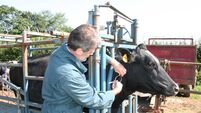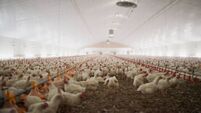Teagasc outlines profit advice for forest owners

Teagasc and its partners Coillte, the Society of Irish Foresters, and the Department of Agriculture’s Forest Service offered guidance to forest owners whose plantations are now coming up for re-establishment, having harvested their final timber crop.
Nuala Ní Fhlatharta, Teagasc’s head of forestry development, said: “There is an opportunity when reforesting to improve the forest both from economic and environmental perspectives in the second rotation. This can be done by using improved tree species and enhanced establishment and management practices. That is why these events are so important, so forest owners can see best practice for themselves.”
She said the re-establishment of a forest is very different to afforestation. After a clearfell, there is an abundance of branch material on the ground. Ground preparation involves removing this material from the site, or tidying it up into piles called windrows.
After this, prompt replanting with suitably sized and sturdy young trees can reduce reforestation costs and ensure the quick establishment of the next forest. Vegetation such as briars, gorse, and willow can encroach rapidly and timely control of vegetation is critical to successful reforestation.
Another key issue with reforestation is the control of the large pine weevil (Hylobius abietis). Chemical control over the first two years of the reforestation process is necessary to limit damage. Such treatments should be done in line with the new Sustainable Use Directive.










